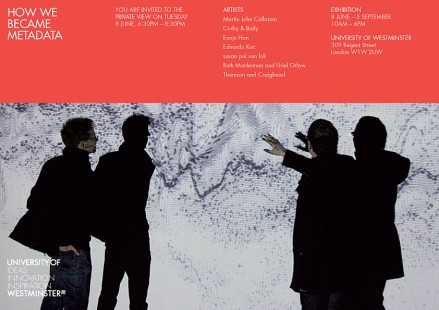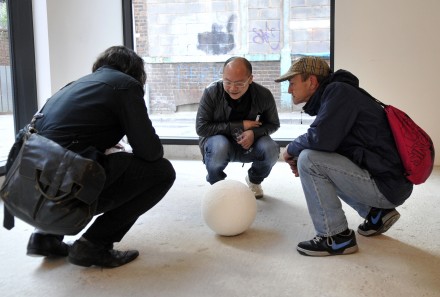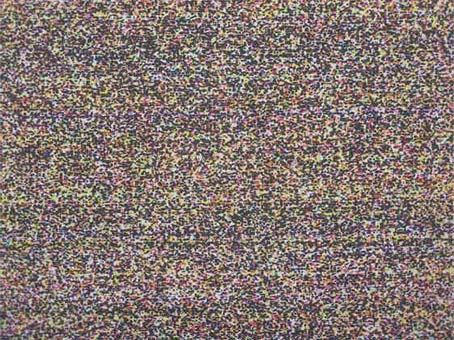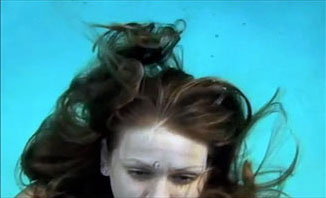Posts in Category ‘digital’
Born in 1987: The Animated GIF
at The Photographer’s Gallery

19 May – 1 July 2012
An Animated GIF from the opening sequence of Love Brid is currently screening on ‘The Wall’ at the all new Photographers’ Gallery.
‘The Wall’ is a flat screen video wall hosting the Gallery’s new digital programme. ‘Born in 1987: The Animated GIF’, is its first exhibition. The gallery invited contributions from a range of practitioners resulting in over 40 animated GIFs which will be joined later in the show by contributions from members of the public.
click here to see animated gif
The Photographer’s Gallery
16 – 18 Ramillies Street, London W1F 7LW
Monday – Saturday 10.00 – 18.00
Thursday 10.00 – 20.00
Sunday 11.30 – 18.00
The World in 100 Years
The World in 100 Years
Ars Electronica Center, Linz, Austria
June 16th – September 19th 2010
“Everyone will have his own pocket telephone that will enable him to get in touch with anyone he wishes. People living in the Wireless Age will be able to go everywhere with their transceivers, which they will be able to affix wherever they like— to their hat, for instance …“
Robert Sloss: “The Wireless Century,” in: “The World in 100 Years,” Berlin, 1910
The new exhibition in the Ars Electronica Center Linz pays tribute to the creativity, courage and inventiveness of those men and women who have totally committed their energies, abilities and knowledge to a vision of the future. This exhibition surveys a 200-year time span: looking back at what people about a century ago anticipated for this day and age, and showcasing what contemporary thinkers foresee 100 years from now.
As proxies standing for all the visionaries and trailblazers who have worked on their respective „futures“ over the course of humankind‘s history, French writer, illustrator and caricaturist Albert Robida (1848–1926) and Belgian visionary Paul Otlet (1868–1944) occupy this exhibition‘s spotlight.
Bruce Herr, Katy Borner (USA), Wikipedia Visualization
Marjolin Dijkman (BE, NL), Wandering through the Future
Frederik De Wilde (BE), Hostage
Bruce Baikie (USA), Intelligent Solar Powered 3G-WiFi Broadband Access
Hans Frei (CH), Marc Böhlen (USA), Micro Public Places
Teresa Maria Buscemi (USA), electroStatic Architecture
Catherine Kramer (UK), Community Meat Lab
Ken Banks (UK), Frontline SMS
Open Sailing Crew with Cesar Harada (UK), Open Sailing
Tatsuya Narita (JP), Toaster to understand today’s weather
Doug Fritz (USA), Sajid Sadi (USA), Engaze
Brigitte Hadlich (DE), c.50p – 50. Breitengrad
Jonas Burki (CH), Sun_D
Takayuki Nakamura (JP), Wonderful World
Josh Schiller, James Tunick, Carrie Elston (USA), City of the Future
Martin John Callanan (UK), Location of I
Himanshu Khatri (IN), Aquaplay
shiftspace.org (USA). ShiftSpace
Martin Mairinger (AT), USED Clothing
Akio Kamisato, Satoshi Shibata, Takehisa Mashimo (JP), Moony
How We Became Metadata

You are invited to the Private View of the exhibition inaugurating The Gallery at 309 Regent Street on: Tuesday 8th June, 6:30-8:30pm
HOW WE BECAME METADATA
9 June 2010 – 5 September 2010, 9:00 – 17:00
Martin John Callanan
Corby & Baily
Eunju Han
Eduardo Kac
susan pui san lok
Ruth Maclennan and Uriel Orlow
Thomson & Craighead
Curated by Marquard Smith
University of Westminster, 309 Regent Street, London W1 2UW
UrbanTick: Ecological Urbanism
Martin with Richard Hamblyn write a guest post for Urbantick’s Ecological Urbanism series.
FutureEverything – Serendipity City

FutureEverything, taking place 12-15 May in Manchester UK. Expect world premieres of astonishing artworks, an explosive citywide music programme, visionary thinkers from around the world, and awards for outstanding innovations.
Serendipity City: The FutureEverything 2010 main exhibition, featuring architecture-inspired art, a curated selection of city-drifting iPhone and Android apps, jaw-dropping data visualisations including Martin John Callanan’s A Planetary Order, and a selection of FutureEverything 2010 Award nominees. The venue is The Hive (47 Lever Street, Manchester M1 1FN), a spanking new Northern Quarter location.
Tim Head: Raw Material

Laughing Cavalier (still), Tim Head 2002
21 November 2009 to 9 January 2010
A major solo exhibition by Tim Head at Huddersfield Art Gallery.
The exhibition will showcase a selection of digital works, drawings and prints and will include a dramatic outdoor digital projection on the Library and Art Gallery building to coincide with the Huddersfield Contemporary Music Festival (until 29 November).
Admission free
Monday – Friday 10am–5pm
Saturday 10am–4pm
Sunday 22 and 29 November 10am–4pm
Closed all other Sundays and Bank Holidays
Huddersfield Art Gallery
Princess Alexandra Walk
Huddersfield
HD1 2SU
The exhibition will tour to Kettles Yard in Spring 2010
Several Interruptions
Thomson & Craighead’s new video work Several Interruptions is now available to watch online. It has been commissioned by the Arts Council of England especially for the re-branding of their new website, which went online today! You can watch it online and read a short text about the work written by Sarah Cook here:
http://artscouncil.org.uk/our-work/several-interruptions/
http://www.thomson-craighead.net/docs/interruptions.html
Seascape book
Charting the span of Susan Collins’ Seascape, from its earliest online manifestations to its gallery exhibition at the De La Warr Pavilion in Bexhill, a publication on the Seascape project has been produced by Film and Video Umbrella. The book features newly commissioned essays by Sean Cubitt and Nicholas Alfrey and includes an extensive colour plate section of archive seascape images.
The book is now available from the De La Warr Pavilion shop and other art bookshops. To order a copy online email books@fvu.co.uk



ISBN 978-1-904270-30-0
visit www.fvu.co.uk for further details
Seascape

2009
A solo show presenting a new body of work by Susan Collins
opens on Saturday 4th April at the
De La Warr Pavilion, Bexhill-on-Sea
and continues until 14 June 2009
SEASCAPE consists of a series of gradually unfolding digital seascapes created using imagery captured by webcams installed at five key coastal vantage points between Margate and Portsmouth. Sited at each location for up to a year before the start of the show, the webcams record the endless fluctuations in the light that are a characteristic feature of the English coastline and whose ever-changing nature has attracted painters for generations.
Read more
Migrating Reality
Location of I text by Martin John Callanan published in Migrating Reality book and conference.

Migrating Reality
ISBN 978-9955-834-01-4
Electronic and digital systems generate completely new forms of migration. In the creative arts, new phenomena related to migration and the synergies of disparate systems are emerging. Artistic products evolve from traditional forms into hybrid digital forms. Analog products are being digitized; data spaces are trans-located from one data storage system to another; existing sounds, images, and texts are remixed and fused into new datasets.
The book is based on international conference and exhibition Migrating Reality which took place on April 4-5, 2008 in Galerie der Künste, Berlin, Germany, and on material submitted to the online magazine balsas.cc. As with the conference, the exhibition, and the on-line projects, the book is an overview of the migration topic from various perspectives, not excluding the use of a variety of languages. For example, we offer the reader an interview with Žilvinas Lilas “Bastymasis man būtų daug priimtinesnis žodis” conducted by Vytautas Michelkevičius in Lithuanian and the text “Kulturtransfer in der Frühen Neuzeit – eine andere Realität der Migration” by Philipp Zitzlsperger – an essay on migration from a historians perspective. The ideas presented textually in the book shift back and forth from essays and articles to projects and back to essays. The territories shift from social space to virtual space and eventually land us back in a realm of physical, political, economical, and historical reality.
Publisher
KHM – Kunsthochschule für Medien
Verein zur Förderung kultureller Praxis e.V.
VšĮ Mene
Editorial board
Mindaugas Gapševičius, John Hopkins, Žilvinas Lilas, Vytautas Michelkevičius
Silicon Fen – the book

Silicon Fen
With texts by Iain Sinclair, Simon Willmoth, Steven Bode, Sean Cubitt and Tom Williamson
ISBN 978-1-904270-27-0
A record of a long-running visual arts project that took place at venues across the east of England between 2004 and 2007, Silicon Fen considers how landscape in general (and the East Anglian landscape in particular) has been both affected and reflected by technology.
Including documentation on works for Silicon Fen by artists Suky Best, Susan Collins, Dalziel + Scullion, Annabel Howland, Stephen Hughes and TNWK
For further information please visit the Film and Video Umbrella website
encoding_experience/10_October_2008_18:00_EST.*
Work by:
Danya Vasiliev [RU]
Nicola Unger [DE]
Michelle Teran [CAN] & Isabelle Jenniches [NL]
Nathan Menglef [USA]
Nancy Mauro-Flude [AUS]
Walter Langelaar [NL]
Jesse Darlin’ [UK]
Scot Cotterell [AUS]
Martin John Callanan [UK]
Essays
“Casting Away” by Francesca da Rimini,
“GOD LISTENS TO SLAYER” by Andrew Harper
encoding_experience/10_October_2008_18:00_EST.*
Plimsoll Gallery, Centre for the Arts,
University of Tasmania, Hunter St, Hobart.
Exhibition: 10 October – 31 October, 12:00- 17:00 daily EST.
Exhibition Opening: Friday 10 October, 17:30 EST.

encoding_experience/10_October_2008_18:00_EST.* is the first of a series of exhibitions
inspired by the ways in which artists are embracing critical, hands on interventive
strategies towards the understanding of, and experimentation with technology.
The artists in the show open up issues of privacy, piracy and control,
paradigms that are deeply embedded into technology and the way technology
is designed.
Most of the artists favour a collaborative, socio-centric approach to their work,
they have an agenda about thinking through questions such as;
Where does the technology come from? What is the real use of a computer?
What are the social issues around regular access to domestic machines
i.e. game consoles, home stereos and digital cameras.
How do we use and question systems that tirelessly reproduce and augment environments,
image and sound?
Actively engaging with conceptual concerns, DaDa-esque notions of performance,
hacking and intellectual property; encoding_experience presents an insight into
how electronic media and craft knowledge operates in current art practice, not only
in terms of its functionality, but also in regards to artists who have a critical
approach towards the politics, aesthetics and economies coded into these systems.
The concept for this show was initiated and developed by Nancy Mauro-Flude,
in collaboration with Scot Cotterell.
More info
Slow Fields, Susan Collins and Tim Head
at Osterwalder’s Art Office, Hamburg
Opening Friday, 12. September 2008 at 7 p.m.
Duration: 13. September – 1. November 2008
Opening Hours: Tue – Fri 2 – 6 p.m., Sat. 10 a.m – 2 p.m
Osterwalder´s Art Office
Isestrasse 37, 20144 Hamburg, Germany
Tel. ++ 040 486109

![]()
above left, Tim Head ‘Dust Flowers’, 2008; above right, Susan Collins ‘Fenlandia, 25th March 2005’
On Saturday 6th September 2008 from 10 a.m. – 10 p.m. as part of the „Rote Punkt“ Gallery Tours Osterwalders Art Office will be showing Susan Collins’ „Glenlandia“ 2 years archive, 12 hrs of moving image projection and Tim Head’s „Wildfire 2004“ Realtime Computer program and LCD Screen.)
Through their parallel working practices Tim Head and Susan Collins explore the properties of digital media in distinct and inventive ways. Susan Collins’ recent work employs transmission, networking and time as primary materials creating digital representations of landscape where each pixel represents a unit of time. Tim Head bypasses image as representation by using solely the prime physical elements of the medium to form the work.
For Tim Head, the elusive and contrary nature of the digital medium and its unsettled relationship with both ourselves and with the physical world forms the basis for recent work. Computer programs are written to generate unique events in ‘real time’ on screens, projections and inkjet prints that focus on the intrinsic properties of these digital media. The programs operate at the primary scale of the medium’s smallest visual element (the pixel or inkjet dot) by treating each element as a separate individual entity. The medium is no longer transparent but opaque.
Susan Collins‘ gradually unfolding, classically romantic landscape images are harvested and archived over the course of the year. They encode the landscape over time, with different tonal horizontal bands recording fluctuations in light and movement throughout the day and with broad bands of black depicting night-time. Stray pixels appear in the image where the moon passes through or a bird, person, car or other unidentifiable object passes in front of the webcam as the pixel is captured. The work is intended to be slow, a reflection on the ever increasing speeds we demand from the internet. Poised between the still and the moving image, the lens and the pixel, the prints explore how images can be coded and decoded using both light and time as building blocks for the work.
Slow Fields is the first time these two bodies of work will be shown together.
Work and Play, Harewood House
New work by Susan Collins in “Work & Play”
The Terrace Gallery and Grounds, Harewood House
09 August 2008 – 02 November 2008

In June 2008 a new Susan Collins pixel webcam was installed overlooking Harewood’s classical ‘Capability’ Brown landscape. The webcam is programmed to record images of the landscape over the course of a year and a series of digital prints have been produced with each image made up of pixels collected over 21.33 hours. The work plays on parallels between these constructed pixel landscapes and the construct of this composed picturesque idyll.
The exhibition Work & Play explores Harewood House and its estate in the wider landscape. A few prints from this new Harewood series will be on display alongside other images of Harewood including watercolours, architectural plans, historic maps and photographs from the 18th, 19th and 20th centuries.
